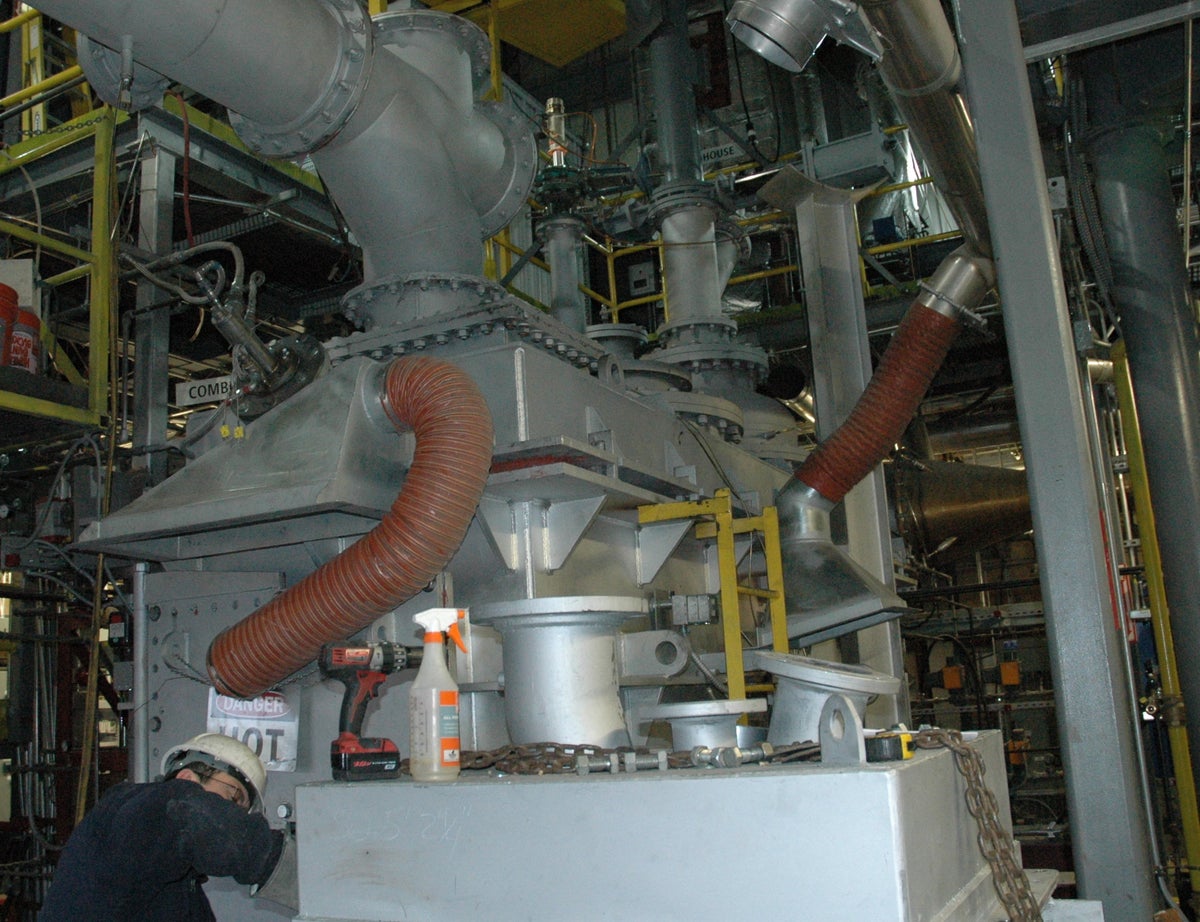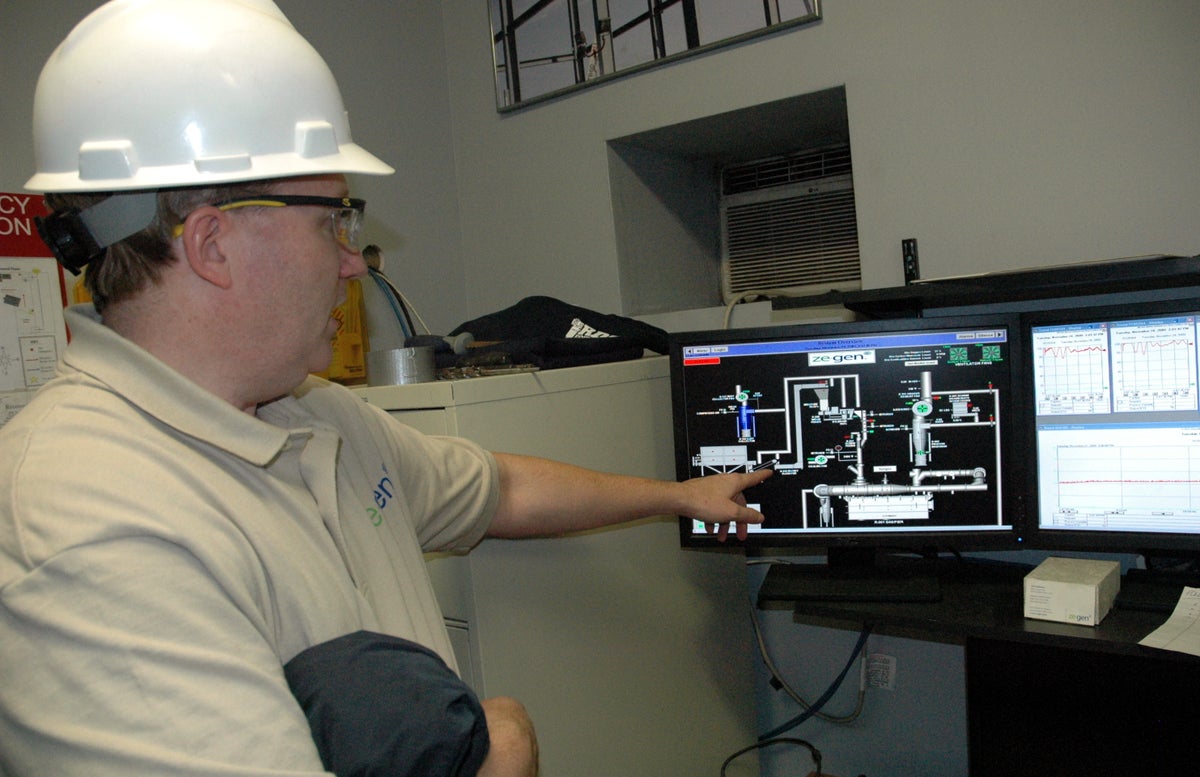Waste gets a workout at energy plant (photos)
<p>Is there a cleaner way to convert garbage into usable energy? Ze-gen's gasification facility is testing a system that gasifies construction debris to make burnable syngas.</p>

Gasifier
NEW BEDFORD, Mass.--What in the world is it? It's a waste gasifier--in case that means anything to you.
It's the pilot system from waste-to-energy company Ze-gen that converts waste from construction sites into usable energy through gasification. The core of the entire operation is the machine in the middle which turns woody waste into a gas that can be burned to make electricity or heat.
In gasification, material is exposed to high heat and pressure so that it breaks down into its elemental components, creating syngas, which is mostly carbon monoxide and hydrogen. The amount of oxygen in the chamber is controlled so it doesn't combust and create carbon dioxide. This machine gasifies waste by running it through a bath of liquid copper held at over 2,000 degrees Fahrenheit inside that unit.
Feedstock
Ze-gen is one of a handful of companies that are developing technology to get usable energy out of waste products, such as municipal trash, or other post-recycling material, such as construction and demolition debris. In September, Ze-gen opened a pilot facility in New Bedford, Mass., for its technology which is operating around the clock, converting woody waste into syngas. At the time of my visit, they were testing the system with wood pellets, seen in the feed conveyor.
Gasification technology is being tested in a number of waste-related applications, including turning wood chips into ethanol and municipal garbage into electricity. Proponents of the technology say it's cleaner than burning trash to make power and it diverts trash from landfills, which produce the potent greenhouse gas methane. Ze-gen hopes to sell this system to industrial customers looking to make heat and power on-site and reduce costs of waste disposal. This photo gallery will highlight the main components of this system.
Feed chute
The feedstock is fed into the gasifier from above in a controlled way. To maintain the heat and pressure in the main unit, feedstock is dropped from one portion of a long chute to the next. This pilot facility can process 100 pounds of waste an hour. Ze-gen's hope is to have its next plant be able to process five tons an hour. In a full-scale system, the operation would have an automated shredding system.
Gasifier from above
From the feed chute, the waste is dropped directly in the 11-foot-long gasifier which is half filled with molten copper. The process needs to be optimized for different types of feedstocks. At this site, Ze-gen engineers inject a unit with oxygen gas to help stir the liquid metal bath, said Rod Sidwell, a senior process engineer from Ze-gen.
Temperature reading
While I was visiting, Ze-gen engineers took a temperature reading--hot enough to melt metal. Even on a cold November night, it was 80 degrees inside the building. If used in an industrial facility, the gas would be burned for heat or power, much the way industrial companies burn natural gas on site. Since this is still a pilot plant, the syngas that is produced here is actually cooled, cleaned, and ultimately flared. Along the way, there are probes to take data on the chemical makeup of the gas and other data.
Slag
Not everything in construction debris can be converted into usable energy. Leftover material, such as glass, needs to be collected out of the gasifier regularly. With a commercial facility, that process would be automated.

Control Room
The facility has a control room that allows engineers to monitor the operation and make adjustments for different feedstocks. The entire plant can be run by a single person and controlled remotely, according to the company.

